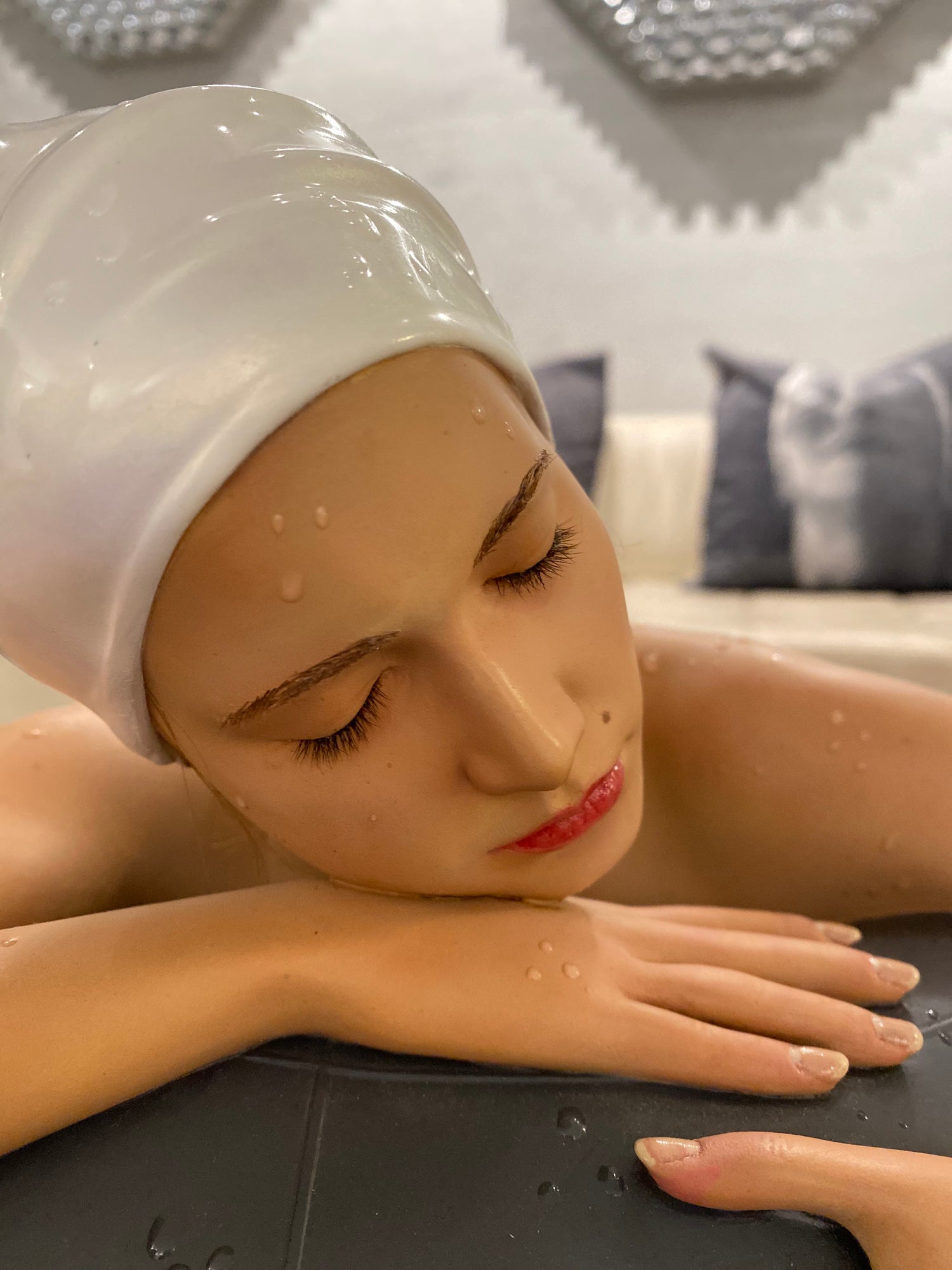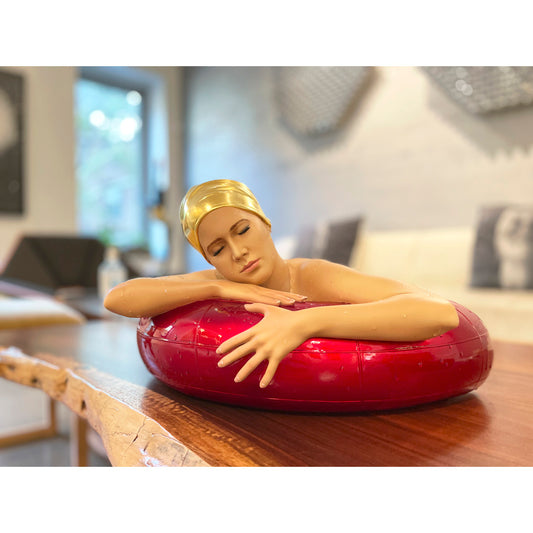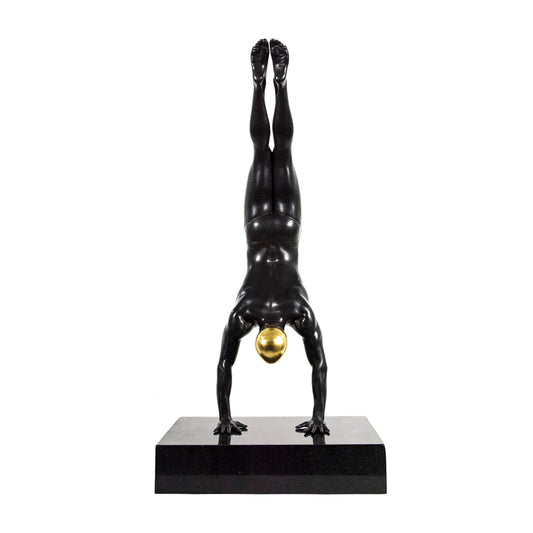CAROLE FEUERMAN

ARTIST BIO & STATEMENT
Carole Feuerman, born in 1945 in Hartford, Connecticut, is an acclaimed pioneer of superrealism in sculpture. She is celebrated for her lifelike figurative works depicting swimmers and dancers. Residing in New York, she operates studios in Manhattan and Jersey City. In 2011 she founded the Feuerman Sculpture Foundation to promote the arts.
With a career spanning over five decades, Feuerman has earned global recognition. Selected exhibitions include, Park Avenue, Central Park, Palazzo Bonaparte, the Smithsonian National Portrait Gallery, The State Hermitage, The Palazzo Strozzi Foundation, The Kunstmuseum Ahlen, and the Circulo de Bellas Artes. Her numerous accolades include the Amelia Peabody Award, the Betty Parsons Award, the Lorenzo de Medici Prize, first prizes at the Austrian and Florence Biennales, Best in Show at the 2008 Beijing Biennale, and the 2013 Save the Arts Museum’s Choice Award for Sculpture.
Feuerman's sculptures have been publicly displayed during the Venice Biennale, Paris Olympics, Made in Cloister Foundation, the Medici Museum of Art and they are featured in prominent collections worldwide, including Grounds for Sculpture, the El Paso Museum of Art, the Boca Raton Museum of Art, the Bass Museum, Art-st-Urban, the Forbes Magazine Collection, the Caldic Collection, and the Credit Suisse Collection. They are owned by the City of Peekskill NY and Sunnyvale California.
Her contributions to the art world are chronicled in her most complete monograph to date, Feuerman: Superrealist Sculptures, published by Rizzoli and written by Demetrio Paparoni.
With a career spanning over five decades, Feuerman has earned global recognition. Selected exhibitions include, Park Avenue, Central Park, Palazzo Bonaparte, the Smithsonian National Portrait Gallery, The State Hermitage, The Palazzo Strozzi Foundation, The Kunstmuseum Ahlen, and the Circulo de Bellas Artes. Her numerous accolades include the Amelia Peabody Award, the Betty Parsons Award, the Lorenzo de Medici Prize, first prizes at the Austrian and Florence Biennales, Best in Show at the 2008 Beijing Biennale, and the 2013 Save the Arts Museum’s Choice Award for Sculpture.
Feuerman's sculptures have been publicly displayed during the Venice Biennale, Paris Olympics, Made in Cloister Foundation, the Medici Museum of Art and they are featured in prominent collections worldwide, including Grounds for Sculpture, the El Paso Museum of Art, the Boca Raton Museum of Art, the Bass Museum, Art-st-Urban, the Forbes Magazine Collection, the Caldic Collection, and the Credit Suisse Collection. They are owned by the City of Peekskill NY and Sunnyvale California.
Her contributions to the art world are chronicled in her most complete monograph to date, Feuerman: Superrealist Sculptures, published by Rizzoli and written by Demetrio Paparoni.

Frozen in time, Feuerman’s sculptures of women stand as powerful icons, reflecting both the artist’s identity and the universal feminine spirit. As a female artist, she explores the challenges of navigating life and the art world, expressing struggles and triumphs through her work. Her resin figures, adorned with water droplets frozen mid-motion and soft eyelashes poised in thought, embody the courage and fear that shape human experience. During a period of emotional struggle, Feuerman found inspiration in a swimmer emerging confidently from the water, igniting her desire to portray not only strength and resilience but also her own journey of self-discovery. Her life-size sculptures resonate deeply, portraying themes of perseverance, balance, and triumph. Feuerman’s ability to capture these moments of vulnerability and resolve lends her work a timeless, universal appeal.
Healing Campaign: Carole Feuerman
Mana Contemporary: Carole Feuerman
-
"Capri" inspired Velvet Pillowcase
Regular price $114.00Regular priceUnit price per -
"Catalina" inspired Velvet Pillowcase
Regular price $114.00Regular priceUnit price per -
"Moran" inspired Velvet Pillowcase
Regular price $114.00Regular priceUnit price per -
"Serena" inspired Velvet Pillowcase (L)
Regular price $114.00Regular priceUnit price per -
"Serena" inspired Velvet Pillowcase (R)
Regular price $114.00Regular priceUnit price per -
Eyes Open Velvet Pillowcase
Regular price $148.00Regular priceUnit price per -
Mini Serena with Candy Red Tube and 24k Gold Leaf Cap
Regular price $36,000.00Regular priceUnit price per
- Choosing a selection results in a full page refresh.
- Opens in a new window.

















